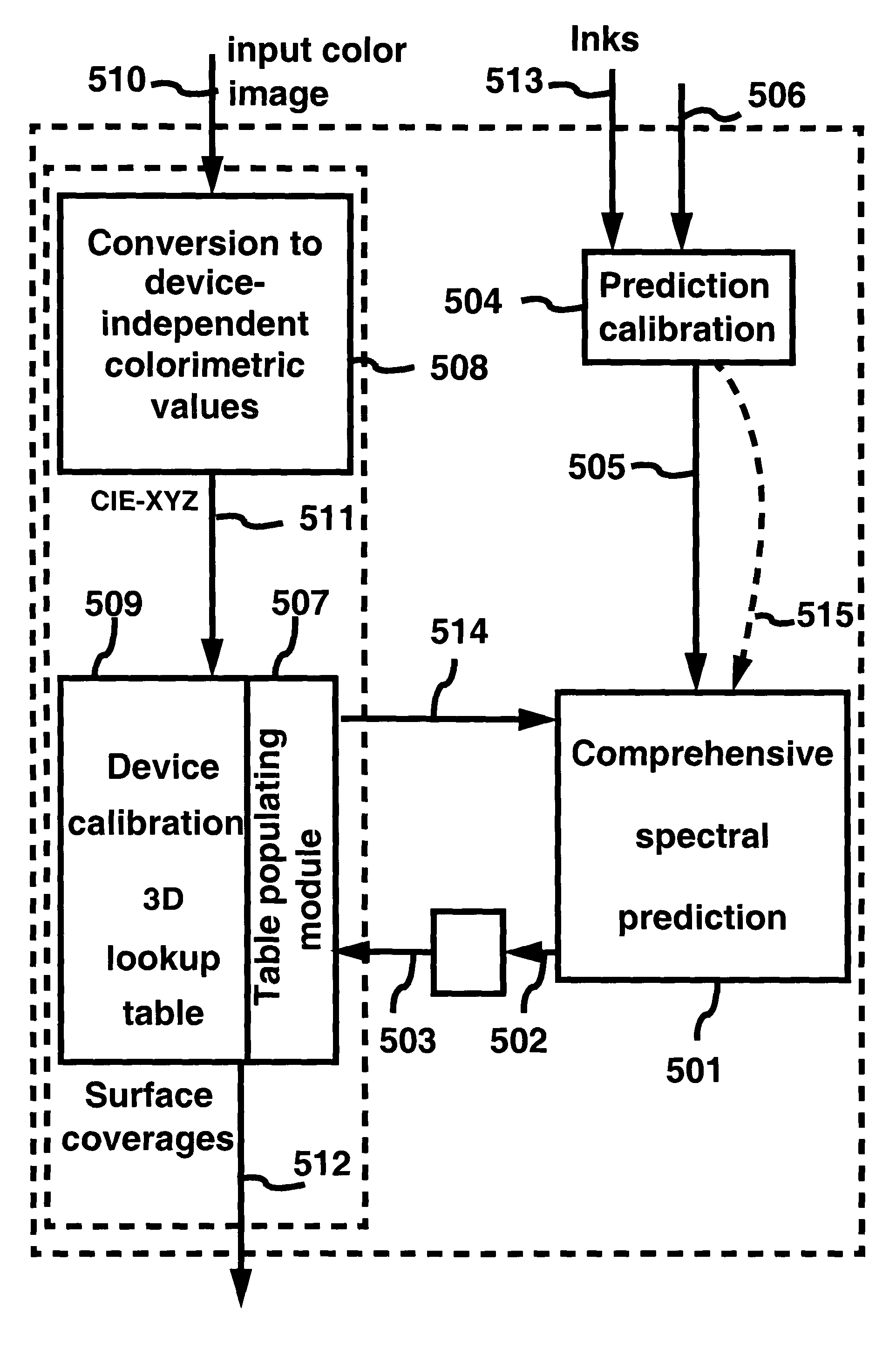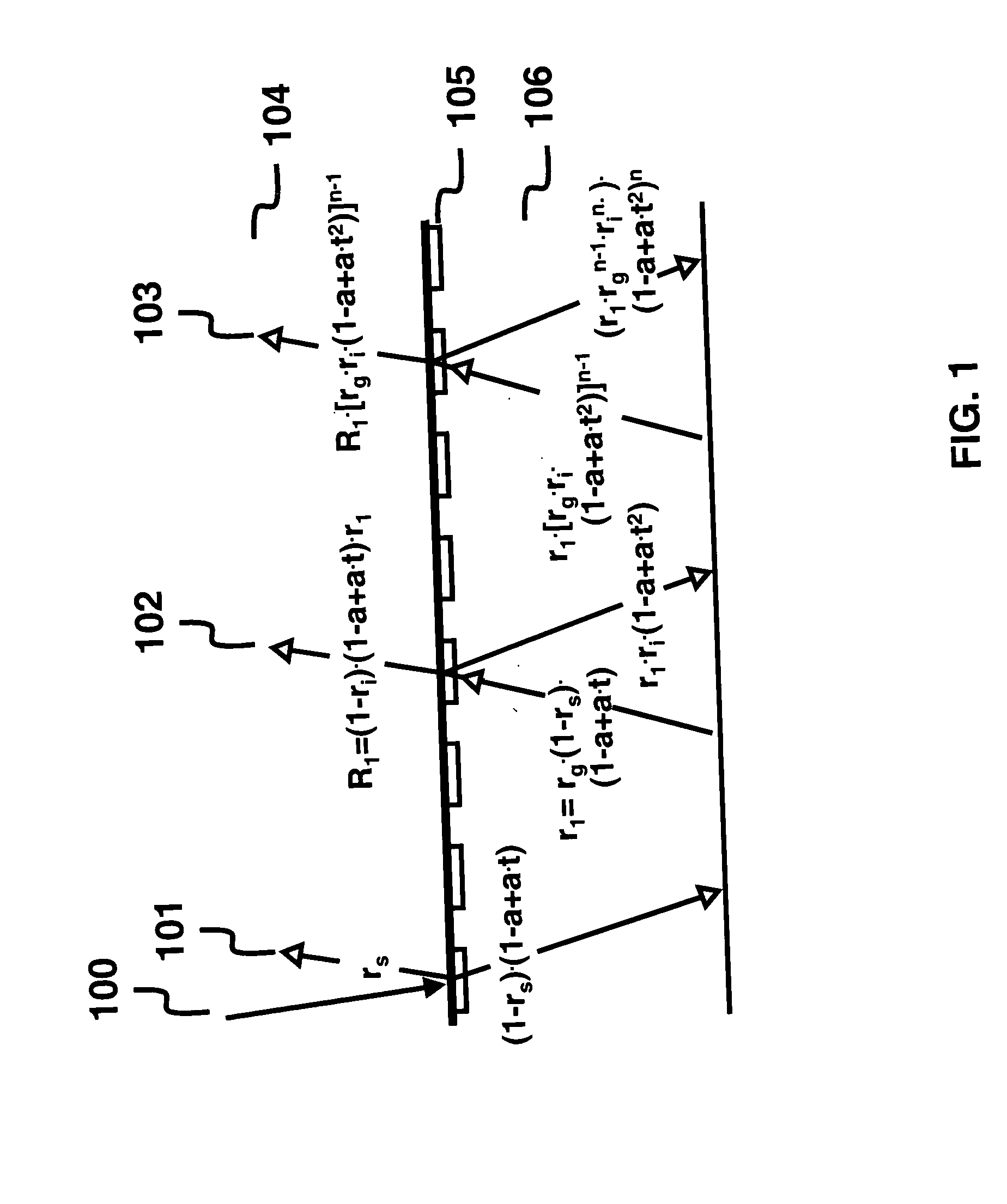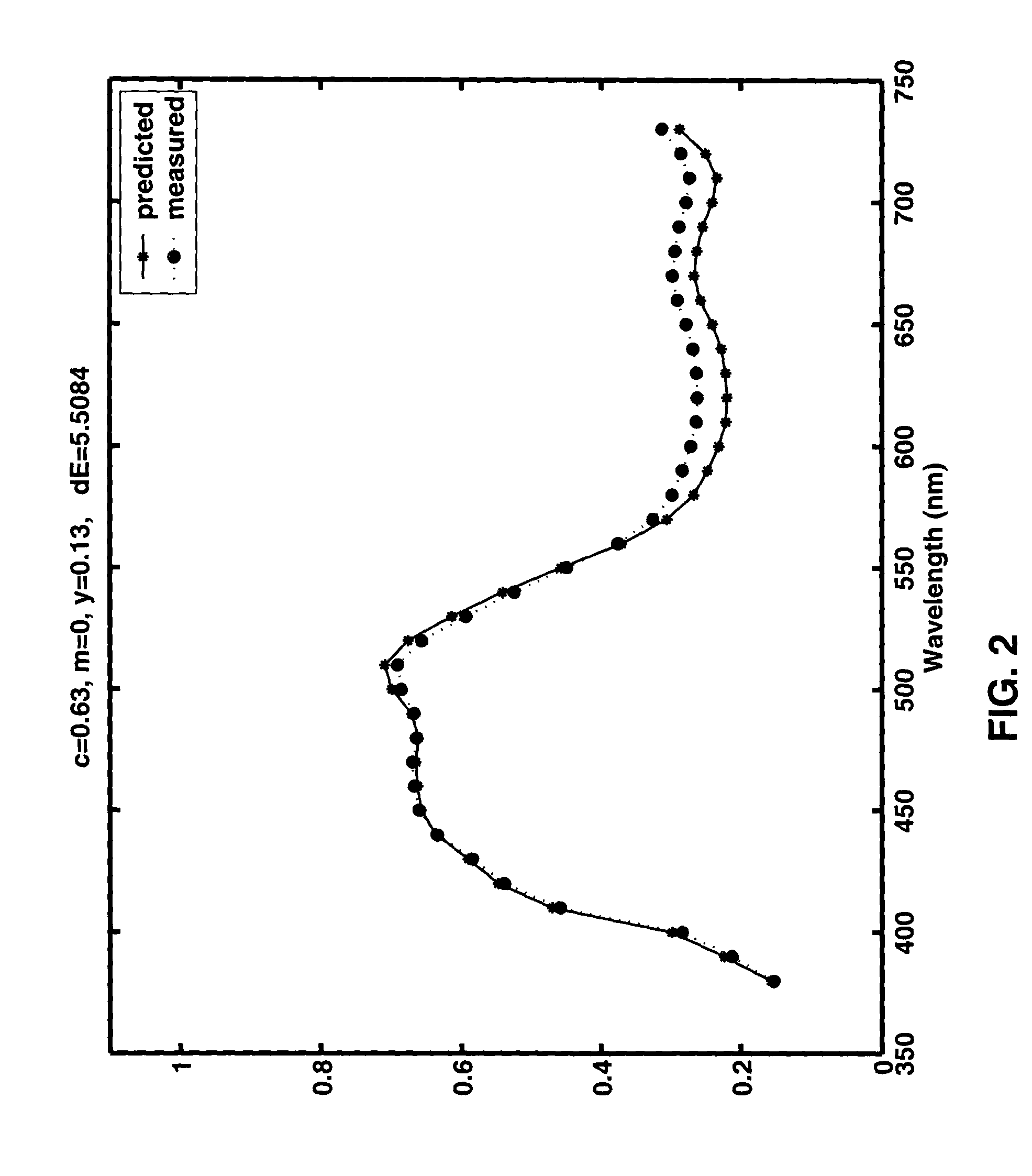Prediction model for color separation, calibration and control of printers
a technology of color separation and calibration, applied in the field of printing, can solve the problem that the relative ink thickness value cannot be used to predict, and achieve the effect of high accuracy and convenient printer calibration
- Summary
- Abstract
- Description
- Claims
- Application Information
AI Technical Summary
Benefits of technology
Problems solved by technology
Method used
Image
Examples
first embodiment
(A)
[0134] A system (example shown in FIG. 5) capable of performing the color separation of color images into a set of target inks comprises the following modules.
[0135] 1. A comprehensive spectral color prediction module 501 for predicting reflection spectra 502 (and calorimetric tri-stimulus values 503) of halftone patches printed with nominal surface coverages 514 of a set of inks.
[0136] 2. A comprehensive spectral prediction calibration module 504 for performing the calibration of the comprehensive spectral color prediction module 501. Calibration parameters 505 comprise the internal transmittances of the inks, the internal transmittance of the substrate (paper), the surface coverages of the inks alone and in superposition with one or several other inks, the relative ink thicknesses when two or more inks are superposed and the mapping of given nominal surface coverages to effective surface coverages.
[0137] 3. A device calibration 3D lookup table populating module 507 for fitti...
second embodiment
(B)
[0141] One may also think of a color separation system which, thanks to an extended lookup table, directly maps input image color coordinates 510 to coverages of inks 512. Instead of having entries specified as device-independent colorimetric values, the entries are formed by input image color coordinates sampled at given intervals, e.g. 0%, 10%, . . . , 90%, 100%. This is easily achieved, since a straightforward correspondence exists between input image coordinates (e.g. red, green, blue) and device-independent colorimetric tri-stimulus values (see section 5.8, CRT Displays, Digital Color Imaging Handbook, Ed. G Sharma, CRC Press, 2003, 324-328).
System for the Control of Printers and Printing Presses
[0142] The disclosed system (FIG. 6) for the control of printers (or printing presses) comprises the printer 600, printed pages 601, an image acquisition device 602, an image acquisition & conversion module 603, the printer control system 605, the comprehensive spectral prediction ...
PUM
 Login to View More
Login to View More Abstract
Description
Claims
Application Information
 Login to View More
Login to View More - R&D
- Intellectual Property
- Life Sciences
- Materials
- Tech Scout
- Unparalleled Data Quality
- Higher Quality Content
- 60% Fewer Hallucinations
Browse by: Latest US Patents, China's latest patents, Technical Efficacy Thesaurus, Application Domain, Technology Topic, Popular Technical Reports.
© 2025 PatSnap. All rights reserved.Legal|Privacy policy|Modern Slavery Act Transparency Statement|Sitemap|About US| Contact US: help@patsnap.com



